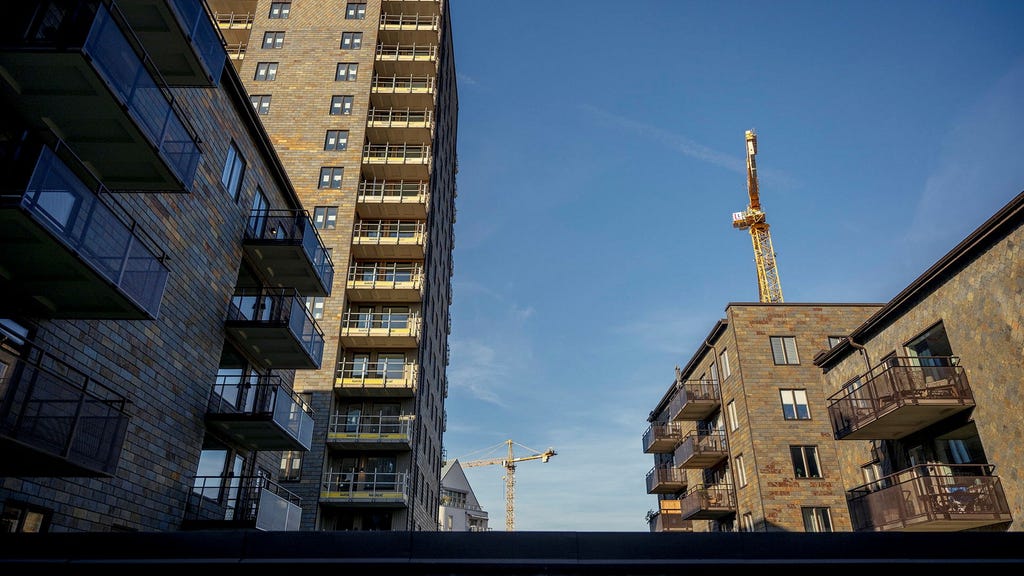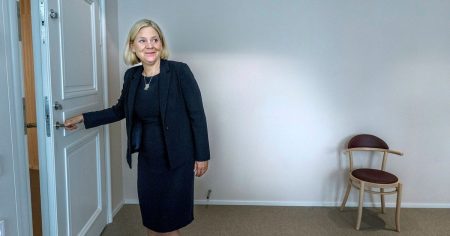The Swedish housing market is facing a significant shortage, with a projected need for 52,330 new homes annually until 2033, according to a recent report by the National Board of Housing, Building and Planning (Boverket). The crux of the issue lies in the affordability of these new homes, as emphasized by Jörgen Mark-Nielsen, the chief of social policy at the Swedish Public Housing Association. He points out the pressing need for apartments that cater to the financial realities of ordinary citizens. This shortage is exacerbated by a decline in building permits issued since the current government took office, with a particularly sharp drop in approvals for apartment buildings. The number of permits granted for multi-family dwellings in 2022 was more than halved compared to the previous year, according to Statistics Sweden (SCB).
Boverket attributes this decline primarily to escalating construction costs, but other factors are also at play. Surveys conducted by Boverket reveal that several county administrative boards identify the withdrawal of the investment subsidy as a contributing factor to the slowdown in construction. This state-sponsored subsidy, designed to stimulate the construction of student housing and rental apartments with lower rents, was intended to address housing shortages in specific areas. The decision to phase out this investment subsidy was made by the previous parliament, dominated by the Moderates, Sweden Democrats, and Christian Democrats, during the budget negotiations in the fall of 2021.
The current government, comprising the Tidö parties (Moderates, Sweden Democrats, Christian Democrats, and Liberals), accelerated the termination of the investment subsidy in their first joint budget presented in the fall of 2022. Their rationale for this move was that ”the housing shortage cannot be solved with costly subsidies with low accuracy.” This abrupt cancellation left many construction projects that had been promised funding in limbo, drawing criticism from figures like Jörgen Mark-Nielsen, who deemed it an ”unfair act by politicians.” However, Anna Broman, a business policy expert at the Swedish Construction Federation, welcomed the removal of the subsidy, arguing that companies had adapted their business models to rely on it, making them vulnerable to its withdrawal.
Despite their differing views on the investment subsidy, both Mark-Nielsen and Broman concur on the necessity of a more unified approach to housing policy across the political spectrum. This sentiment is echoed by Marie Linder, the national chairperson of the Swedish Tenants’ Union, who advocates for political consensus on supporting housing construction. She cites a report commissioned by the Tenants’ Union that highlights the impact of the investment subsidy, concluding that 30,509 homes would not have been built without it, and that the subsidy played a significant role in keeping rents affordable.
Since taking office, the current government has introduced two legislative proposals aimed at bolstering construction. The first involves extending an existing framework for temporary building permits, while the second aims to regulate municipalities’ housing provision, clarifying the number of homes needed and streamlining the process. However, these measures have been met with criticism from the opposition. Mikael Damberg, the Social Democrats’ economic policy spokesperson, criticizes the government’s approach, accusing them of having ”zero policy” and dismantling the very policies that effectively stimulated the construction of rental housing. He advocates for the reinstatement of the investment subsidy.
Furthermore, Damberg calls for targeted support for housing construction in industrial areas within Norrbotten and Västerbotten, regions experiencing growth due to the green transition. While the government’s latest budget allocates 140 million SEK for such support, Damberg argues that this amount is insufficient. Attempts to obtain a direct interview with Housing Minister Andreas Carlson of the Christian Democrats have been unsuccessful, with only written comments provided by his press contact. Carlson defends the government’s decision to withdraw the investment subsidy, claiming it largely funded projects that would have proceeded regardless, representing an inefficient use of taxpayer money. He emphasizes the government’s focus on addressing structural obstacles within the construction and housing market by simplifying building regulations, shortening lead times, and facilitating the conversion of commercial spaces into residential units.














